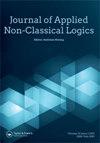刑法中最后行为未遂的建模
Q1 Arts and Humanities
引用次数: 1
摘要
在法庭上,企图犯罪的人会受到惩罚。在人工智能和法律的研究中,一个悬而未决的问题是,尝试定律是否可以正式建模。确定犯罪未遂有不同的法律规则,而最后行为规则(也称为接近规则)代表了最严格的方法。在本文中,我们使用结构化论证提供了最后行为规则的形式化模型。本文章由计算机程序翻译,如有差异,请以英文原文为准。
Modelling last-act attempted crime in criminal law
ABSTRACT In the court of law, a person can be punished for attempting to commit a crime. An open issue in the study of Artificial Intelligence and Law is whether the law of attempts could be formally modelled. There are distinct legal rules for determining attempted crime whereas the last-act rule (also called proximity rule) represents the strictest approach. In this paper, we provide a formal model of the last-act rule using structured argumentation.
求助全文
通过发布文献求助,成功后即可免费获取论文全文。
去求助
来源期刊

Journal of Applied Non-Classical Logics
Arts and Humanities-Philosophy
CiteScore
1.30
自引率
0.00%
发文量
8
 求助内容:
求助内容: 应助结果提醒方式:
应助结果提醒方式:


